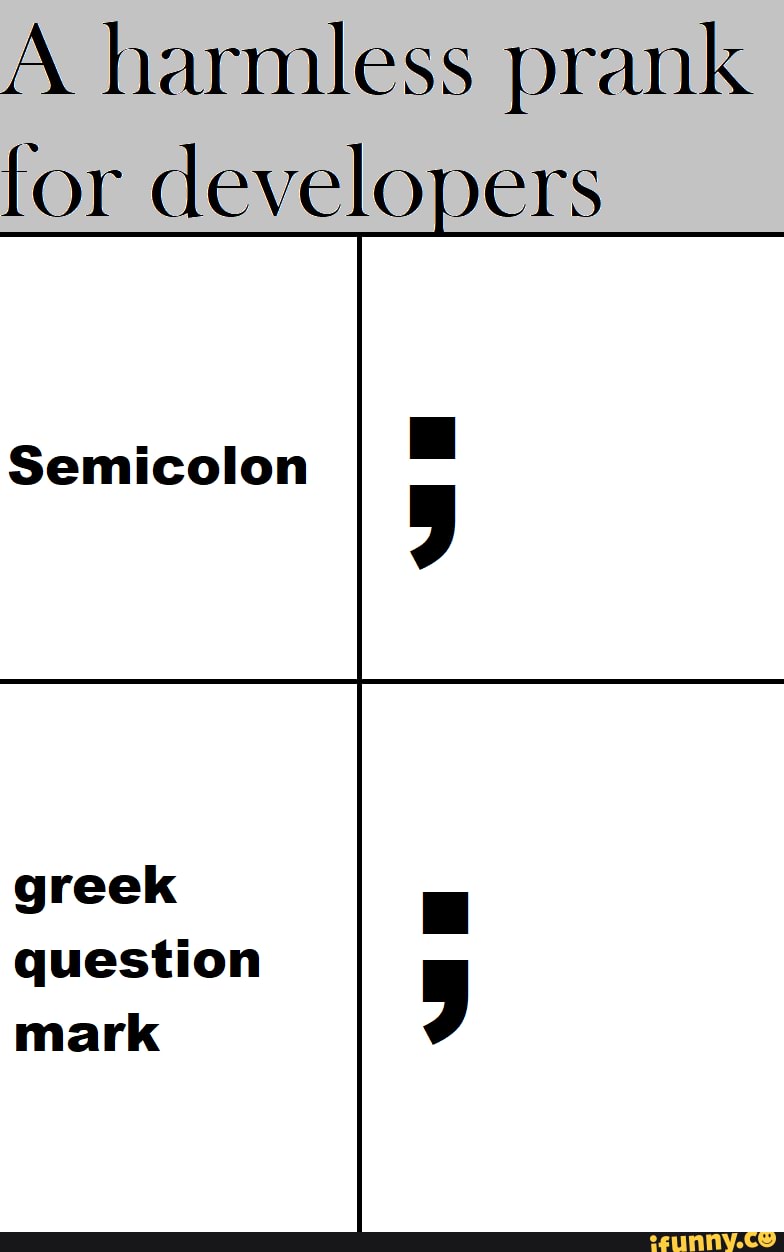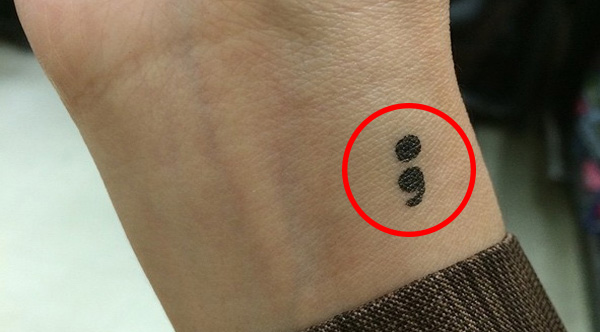
Used to indicate a break in a sentence. ― dash, horizontal bar ( Unicode (Basic Latin) U+2014, U+2015) It is typographically identical to the υποδιαστολή, which is used to differentiate a few homophones:. Used instead of the (English) decimal point in numbers. Used like the English comma to separate clauses, items in lists, etc. Used at the end of an exclamatory sentence and after interjections. ! exclamation mark (keyboard input Alt+0033) Standard keyboard English semicolon character (or Alt+0059), Unicode (Greek) U+037E, (Basic Latin) U+003B Θαυμαστικό (exclamation mark) ("'Why then', someone asked, 'had he spoken so strongly against it ?'") Used at the end of interrogative sentences, in the same manner as the English question mark. Used to mark the break in a word at the end of a line. « » guillemets or quotation marks ( Unicode (Basic Latin) U+00AB / U+00BB keyboard input Alt+0171 / Alt+0187) Used to isolate an aside, comment or explanation from surrounding text. ' apostrophe ( Unicode (Basic Latin) U+0027 keyboard input Alt+0039) Indicates an incomplete sentence or, in direct speech, unsaid words. 
… ellipsis ( Unicode (Basic Latin) U+2026 keyboard input Alt+0133)
To represent it in html use · - in Wiktionary and elsewhere U+0387 is automatically converted to the MIDDLE DOT (U+00B7). Separates two parts of a sentence where a κόμμα is thought to be inadequate. Separates groups of clauses in a sentence. The colon is used in reporting direct speech, described in greater detail below:. In this case they do not refer to punctuation marks. In addition, some marks can be used as diacritic ones (modify or complement the letter). This page presents not only modern, but also historical images. It should be kept in mind that with time graphic representation of signs and their meaning changed. In consequence of the spread of European punctuation in the XX century they are in general similar to many modern world writings - Indian, Jewish, Arabic, Latin and Cyrillic. Punctuation marks are not part of the alphabets. Since then the number of punctuation marks and the rules of their use have not changed dramatically. It lasted until the fifteenth century, when the printer Aldus Manuzio standardized punctuation. However, no specific rules were invented, each author put punctuation marks as he wanted. A couple of centuries later a few more signs appeared and in the second century Nikanor had already eight signs. SEMICOLON VS GREEK QUESTION MARK FULL
At first the full stop was only used, and it was placed on top, below and in the middle of the line.


The founders of the modern system were the grammars who lived in Alexandria in the III – I centuries BC (Aristophanes of Byzantium, Dionysius Thrax, Aristarchus). Then the word “punctuation” was related to the oratory. In ancient times punctuation marks were almost never used.
Symbols, which mean abbreviations of words. Designation of emotional attitude to the different parts of one sentence - words and phrases. Designation of the relationship between parts of the same sentence. Separation of the completed meaning of fragments of the texts – sentences, paragraphs. Semicolon: separate parts of complex sentences,Ĭlassification of punctuation marks by purpose:. Question mark: the sign for interrogative intonation,. They can denote intonation, indicate the connection between words and highlight parts of the text. Punctuation marks are the symbols of written language that are used for a more accurate reproduction of spoken language to the letter.







 0 kommentar(er)
0 kommentar(er)
